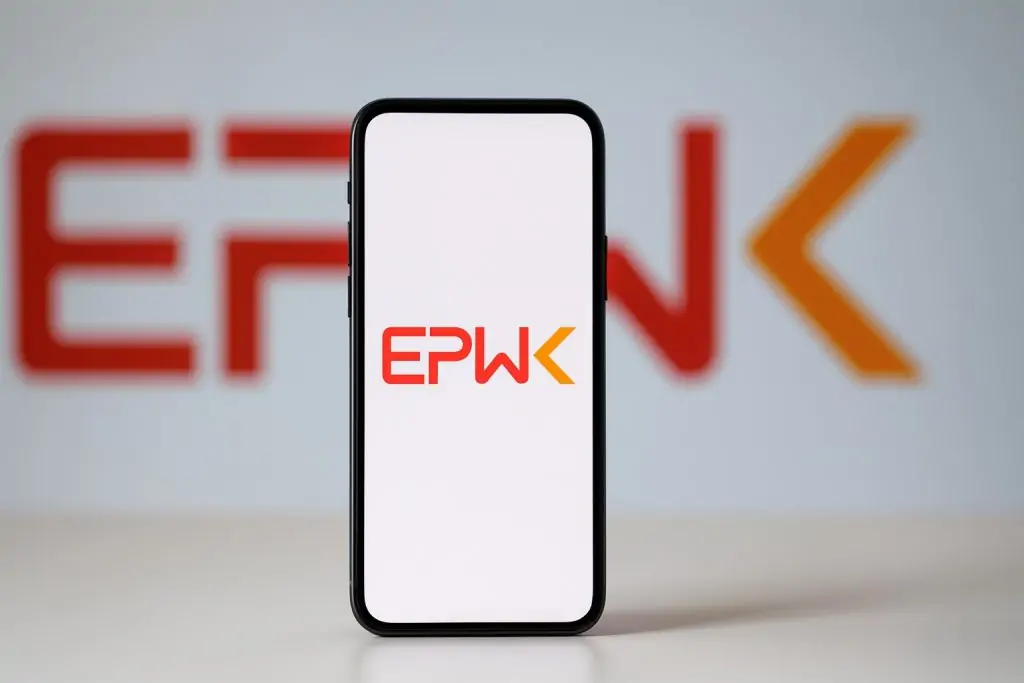Agios Pharmaceuticals, Inc. (NASDAQ: AGIO) is in the spotlight today after unveiling topline results from its pivotal Phase 3 RISE UP trial of mitapivat (Pyrukynd) in sickle cell disease (SCD) — data that are being widely described as “mixed” and have sent the stock sharply lower. [1]
The study hit one of its two primary endpoints and showed strong effects on markers of hemolysis, but it failed to significantly reduce painful sickle cell crises or fatigue across the full study population — the outcomes many investors were most focused on. [2]
Key Takeaways From Today’s Agios (AGIO) News
- RISE UP met the hemoglobin-response primary endpoint: 40.6% of patients on mitapivat achieved at least a 1 g/dL increase in average hemoglobin between weeks 24–52 vs. 2.9% on placebo, a highly statistically significant result. [3]
- But the trial missed the pain‑crisis co‑primary endpoint: Mitapivat showed only a trend toward fewer sickle cell pain crises (2.62 events per year vs. 3.05 on placebo), falling short of statistical significance. [4]
- Fatigue benefit was not demonstrated in the full study population: A key secondary endpoint using the PROMIS Fatigue scale was not met, although patients who achieved a hemoglobin response did show larger improvements in a post‑hoc analysis. [5]
- Biomarkers of hemolysis improved meaningfully: Mitapivat significantly improved hemoglobin levels and lowered indirect bilirubin and reticulocyte counts, reinforcing its anti‑hemolytic profile. [6]
- Regulatory path remains on the table: Agios still plans to meet with the U.S. Food and Drug Administration (FDA) in Q1 2026 and then submit a U.S. marketing application for mitapivat in SCD. [7]
- Share price under heavy pressure: Pre‑market indications showed the stock down roughly 40–50% at one point, with later reports pointing to a smaller but still double‑digit percentage decline by late afternoon as investors digested the data. [8]
What Agios Reported Today: Inside the RISE UP Phase 3 Trial
RISE UP is a global, 52‑week, double‑blind Phase 3 study evaluating mitapivat, an oral pyruvate kinase (PK) activator, in 207 patients aged 16 and older with sickle cell disease. Patients were randomized 2:1 to mitapivat or placebo and had a history of 2–10 pain crises in the prior year plus baseline hemoglobin between 5.5 and 10.5 g/dL. [9]
The trial was intentionally ambitious, with two primary endpoints and five key secondary endpoints designed to capture both laboratory markers and clinically meaningful outcomes:
- Primary endpoints
- Hemoglobin response (≥1 g/dL average increase from weeks 24–52)
- Annualized rate of sickle cell pain crises (SCPCs)
- Key secondary endpoints
- Change in hemoglobin from baseline (weeks 24–52)
- Change in indirect bilirubin (marker of hemolysis)
- Change in PROMIS Fatigue score
- Annualized rate of hospitalizations for SCPCs
- Change in reticulocyte percentage (marker of red blood cell production) [10]
Efficacy Highlights
From today’s topline data:
- Hemoglobin response:
- 40.6% of mitapivat patients hit the hemoglobin‑response threshold vs. 2.9% on placebo (p<0.0001).
- In responders, average hemoglobin rose about 1.6 g/dL from baseline. [11]
- Sickle cell pain crises (co‑primary, not met):
- Annualized crisis rate was 2.62 on mitapivat vs. 3.05 on placebo (p≈0.12), meaning the reduction did not reach statistical significance. [12]
- Hemolysis markers (key secondary, met):
- Hemoglobin levels improved significantly vs. placebo.
- Indirect bilirubin fell significantly, supporting reduced red blood cell destruction.
- Reticulocyte levels also decreased more with mitapivat, aligning with improved red cell health. [13]
- Fatigue (key secondary, not met):
- Both arms showed modest improvements on PROMIS Fatigue, but the difference between mitapivat and placebo was not statistically significant. [14]
Post‑Hoc “Responder” Analysis
Agios is leaning heavily on a post‑hoc analysis that zooms in on patients who did achieve a hemoglobin response:
- Hemoglobin responders had fewer pain crises and hospitalizations than non‑responders.
- Responders also showed greater improvements on fatigue scores, exceeding a commonly used threshold for clinically meaningful change on the PROMIS Fatigue scale. [15]
These responder‑focused data will likely feature prominently in the company’s upcoming FDA discussions, but post‑hoc findings are generally viewed as supportive rather than definitive.
Safety Profile: Consistent With Earlier Trials
On the safety side, Agios reported that mitapivat’s profile in RISE UP was broadly in line with prior sickle cell studies: [16]
- Overall adverse event rates were high but similar in both study arms, as expected in a severe chronic disease.
- Serious treatment‑emergent adverse events occurred in roughly one‑fifth to one‑third of patients, slightly lower in the mitapivat arm.
- Liver abnormalities were not suggestive of drug‑induced injury in RISE UP, which is notable given earlier liver‑signal concerns in other mitapivat programs.
- There were a small number of deaths in both arms; investigators judged none to be related to the study drug.
Regulators will still scrutinize the full safety package in detail, but nothing in today’s topline readout suggests an obvious new safety red flag.
Why Wall Street Is Calling the Data “Mixed”
From a purely clinical standpoint, today’s announcement confirms that mitapivat is a powerful anti‑hemolytic agent: patients had higher hemoglobin, lower bilirubin, and healthier red blood cell indices. [17]
However, pain crises are the heart of the story in sickle cell disease. For patients, families, and payers, the ability to prevent or meaningfully reduce vaso‑occlusive crises (VOCs) is often the critical benchmark.
That’s where the RISE UP data fall short:
- RISE UP did not demonstrate a statistically significant reduction in crisis rates across the full study population, despite a numerical trend in the right direction. [18]
- The fatigue endpoint also failed in the overall population, undercutting the narrative that better oxygen‑carrying capacity automatically translates into felt improvements in quality of life. [19]
Biotech commentators at outlets like STAT, pharmaphorum, Reuters and others are already framing the results as a disappointment relative to the high expectations for a practice‑changing SCD therapy, even as they acknowledge the strength of the hemoglobin data. [20]
Stock Market Reaction: From Pre‑Market Panic to a Smaller But Steep Decline
Investors woke up to the RISE UP press release before the U.S. market open — and the initial reaction was brutal:
- Pre‑market reports from multiple outlets indicated Agios shares were down more than 40–49% at one stage, effectively halving the company’s market value overnight. [21]
- As trading progressed and the nuances of the dataset became clearer, later market coverage pointed to a smaller, though still double‑digit, percentage loss in the stock, with Investing.com citing roughly a 12% drop by late in the session. [22]
The volatility underscores just how important the SCD indication is perceived to be for Agios’ long‑term growth story, and how sensitive sentiment is to any hint that mitapivat may not deliver on its full commercial potential in this much larger patient population.
Separately, fundamental‑focused platforms such as GuruFocus and QuiverQuant have reiterated that Agios comes into this event with a strong balance sheet, minimal debt, high institutional ownership and prior “buy/outperform” ratings — but also a volatile share profile and premium valuation that can amplify swings in either direction on major data days. [23]
How Today’s Data Fit Into Agios’ Rare‑Disease Strategy
Agios has transformed in recent years into a pure‑play rare blood‑disorders company, built around cellular metabolism science and the oral PK activator mitapivat (Pyrukynd). [24]
Its growth thesis rests on three main pillars:
- Existing PK deficiency indication
Mitapivat is already approved in the U.S. as PYRUKYND for adults with pyruvate kinase deficiency, a very rare hemolytic anemia. This is currently a modest niche market. - Thalassemia label expansion (near‑term catalyst)
Agios expects a potential U.S. approval of PYRUKYND in thalassemia in early December 2025, which could meaningfully expand the drug’s addressable population, though still far smaller than SCD. [25] - Sickle cell disease (long‑term growth driver)
With an estimated ~100,000 people living with SCD in the U.S. alone, the sickle cell opportunity dwarfs PK deficiency and thalassemia in scale. [26]- That’s why today’s inconclusive pain‑crisis data are hitting the stock so hard: many investors viewed a clean win on both primary endpoints as the path to a major, durable revenue stream.
Agios’ SCD ambitions also sit in a competitive landscape that includes gene therapies and other disease‑modifying approaches, as well as another oral PK activator, etavopivat, now owned by Novo Nordisk and being studied in several Phase 3 trials. [27]
Regulatory Outlook: Can Agios Still Win an SCD Approval?
Despite missing one co‑primary endpoint and a key secondary endpoint, Agios is not walking away from SCD:
- The company plans a pre‑supplemental NDA meeting with FDA in Q1 2026, then intends to file for U.S. approval in sickle cell disease. [28]
- Its likely argument:
- Mitapivat provides a robust, clinically meaningful anti‑hemolytic benefit.
- A substantial subset of patients who reach a hemoglobin response also enjoy fewer crises, fewer hospitalizations and better fatigue scores. [29]
Regulators will weigh:
- The strength and consistency of the hemoglobin and biomarker data,
- The failure on the crisis and fatigue endpoints in the intent‑to‑treat population,
- Safety findings, and
- The broader unmet need in SCD, despite recent therapeutic advances.
Analysts at STAT and other outlets have already suggested that failing the crisis endpoint could meaningfully diminish the odds of a straightforward approval, or at least complicate the label language and payer positioning, even if FDA ultimately grants some form of authorization. [30]
What to Watch Next
For readers following Agios and AGIO stock, here are the next key milestones to monitor:
- Investor call replay and detailed slides
Agios hosted an investor conference call at 8:00 a.m. ET today to walk through the topline RISE UP data. The webcast replay and slide deck on the company’s investor site will likely include more granular subgroup and safety analyses. [31] - Upcoming medical‑meeting presentations
The company plans to submit detailed RISE UP analyses to future medical congresses; abstracts and presentations could clarify which patient subsets benefit most and how durable the responses are. [32] - Potential PYRUKYND approval in thalassemia (early Dec 2025)
A positive FDA decision here would give Agios another near‑term commercial foothold — important if SCD takes longer than hoped to convert into a meaningful revenue stream. [33] - Q1 2026 FDA meeting update
Any commentary from Agios on how FDA views the mixed RISE UP data, and whether regulators are receptive to an SCD filing, will be a major sentiment driver. - Competitive readouts
Data from Novo Nordisk’s etavopivat program and other emerging SCD therapies will shape how attractive mitapivat looks in the broader treatment landscape. [34]
Bottom Line
On November 19, 2025, Agios delivered exactly the kind of complex, nuanced dataset that divides opinion:
- Clinically, mitapivat clearly improves anemia and hemolysis in sickle cell disease, and appears safe and well‑tolerated in this population.
- Commercially and regulatorily, failing to cleanly hit the pain‑crisis and fatigue endpoints transforms what could have been a clear win into a question mark.
- For the company, the SCD opportunity isn’t dead, but today’s news likely forces a recalibration of expectations around approval probability, label scope and peak sales — even as other catalysts, like potential thalassemia approval, remain on the horizon. [35]
This coverage is for informational purposes only and should not be interpreted as investment advice or a recommendation to buy or sell securities.
References
1. www.globenewswire.com, 2. www.globenewswire.com, 3. www.globenewswire.com, 4. www.globenewswire.com, 5. www.globenewswire.com, 6. www.globenewswire.com, 7. www.globenewswire.com, 8. www.reuters.com, 9. www.globenewswire.com, 10. www.globenewswire.com, 11. www.globenewswire.com, 12. www.globenewswire.com, 13. www.globenewswire.com, 14. www.globenewswire.com, 15. www.globenewswire.com, 16. www.globenewswire.com, 17. www.globenewswire.com, 18. www.globenewswire.com, 19. www.globenewswire.com, 20. www.statnews.com, 21. www.reuters.com, 22. m.in.investing.com, 23. www.quiverquant.com, 24. www.agios.com, 25. www.globenewswire.com, 26. pharmaphorum.com, 27. pharmaphorum.com, 28. www.globenewswire.com, 29. www.globenewswire.com, 30. www.statnews.com, 31. www.globenewswire.com, 32. www.globenewswire.com, 33. www.globenewswire.com, 34. pharmaphorum.com, 35. www.globenewswire.com







